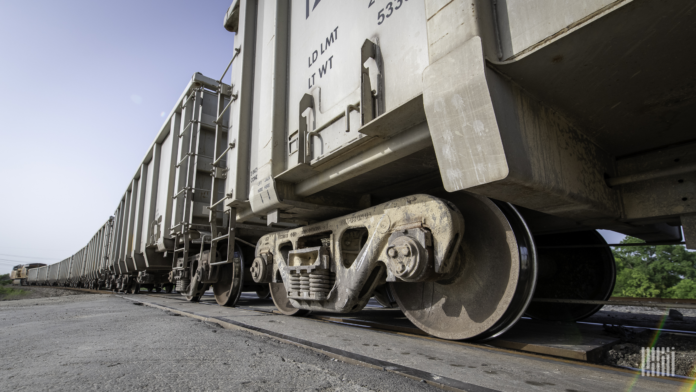A newly released Government Accountability Office report lays out how precision scheduled railroading (PSR) has affected freight rail operations but doesn’t offer recommendations on what steps the industry should take next.
The report essentially summarizes the various views of stakeholders on PSR, which GAO defined as a “strategy intended to increase efficiency and reduce costs.”
Congressional leaders had directed GAO to study the effect PSR has on freight rail safety and service. The agency interviewed 28 stakeholders to produce the report, which describes stakeholders’ views about how PSR changed railroad operations and what the Federal Railroad Administration and the Surface Transportation Board have done to document and record these changes, including through data collected from 2011 to 2022.
The report, released to the public last Friday, details the data available to FRA and STB and how that data might reflect larger operational trends. While FRA and STB said the data they collect so far does not show a clear causal relationship between PSR and safety incidents or rail service, both agencies said they are seeking to address issues raised by industry stakeholders.
Stakeholders’ input generally fell along the lines of their past statements: FRA said although data was inconclusive about how PSR might have changed operations, FRA said the agency has taken steps to address the potential risks that could arise from those operational changes, according to GAO. Meanwhile, Class I railroad representatives said operational changes improved or had no effect on railroad safety, while rail safety inspectors and employee unions said they have identified safety concerns related to reductions in staff and longer trains.
“While FRA has observed some short-term increases in accident and incident rates at some locations, FRA safety data do not show a clear causal relationship between the timing of reported implementation of PSR and changes in railroads’ train accident and incident rates. However, FRA officials noted that they continue to analyze safety data and investigate locations where short-term increases were observed,” the GAO report said.
According to GAO, STB officials said the extent to which PSR-associated changes have affected freight rail service is unclear, based on existing data, although the board is taking steps to address service issues and it is seeking to collect more data that might further illuminate the factors contributing to rail service issues. Freight rail customers identified concerns such as reduced frequency and reliability of service, as well as increased fees.
“Data on freight rail service show variation over the past 10 years, with periods of improvement and decline, but according to STB officials, it is unclear if that variation is linked to any PSR-associated operational changes made by railroads. Available data on freight rail service — including rail speed, dwell time, and average delays — can help STB and stakeholders monitor service conditions and identify regional or national service disruptions,” the report said. “However, STB officials said that data currently collected may not be sufficient to determine whether or not the operational changes associated with PSR have affected rail service.”
Notable aspects of the report included tables illustrating the dates that the Class I railroads implemented PSR and how head count reductions occurred over the past decade.
(Chart: U.S. GAO)
(Chart: U.S. GAO)
The report also said revenue ton-miles for the U.S. operations of the Class I railroads fell 11% between 2011 and 2021, although there was an uptick between 2020 and 2021. Revenue ton-miles measures the weight of freight and the distance transported. The report also noted that rail’s share of freight transportation between 2011 and 2020 fell from 35% to 27%, according to the Bureau of Transportation Statistics.
(Chart: U.S. GAO)
The report also described some broader trends within the freight rail industry, including how the freight railroads “generally operated longer trains” over time in order to increase efficiency and how some railroads reduced assets, such as rail cars and rail yards, from 2011 to 2021. Some railroad representatives told GAO this decline is related to an increase in the number of cars owned and maintained by shippers, rather than by railroads; the decline might also be related to the decrease in the railroads’ revenue ton-miles over the last decade. FRA also noted the railroads may have reduced their locomotive fleets ahead of meeting the 2018 deadline to implement positive train control, a safety technology.
Subscribe to FreightWaves’ e-newsletters and get the latest insights on freight right in your inbox.
Click here for more FreightWaves articles by Joanna Marsh.
GAO studies impact of PSR on US freight rail
RELATED ARTICLES



